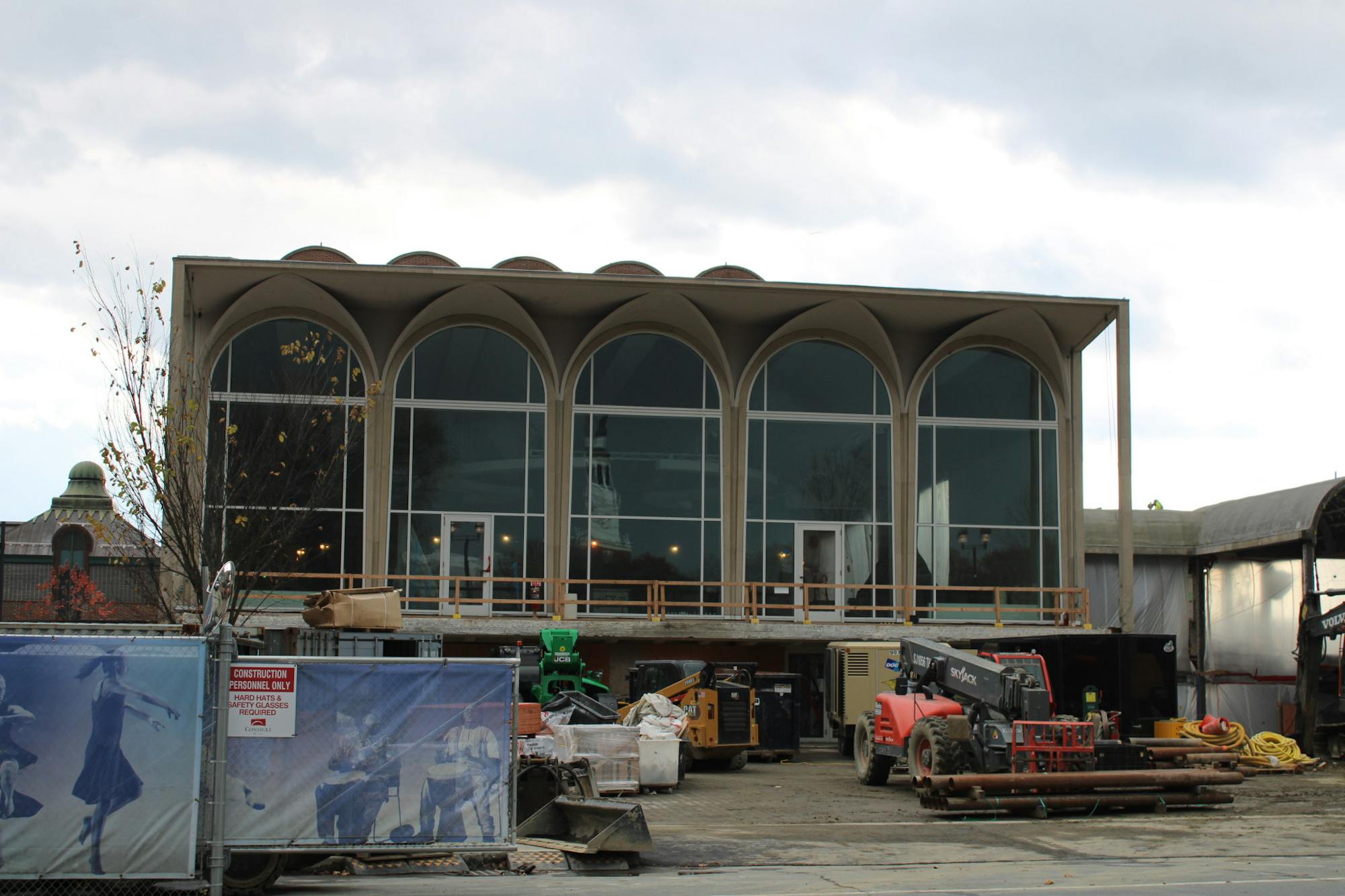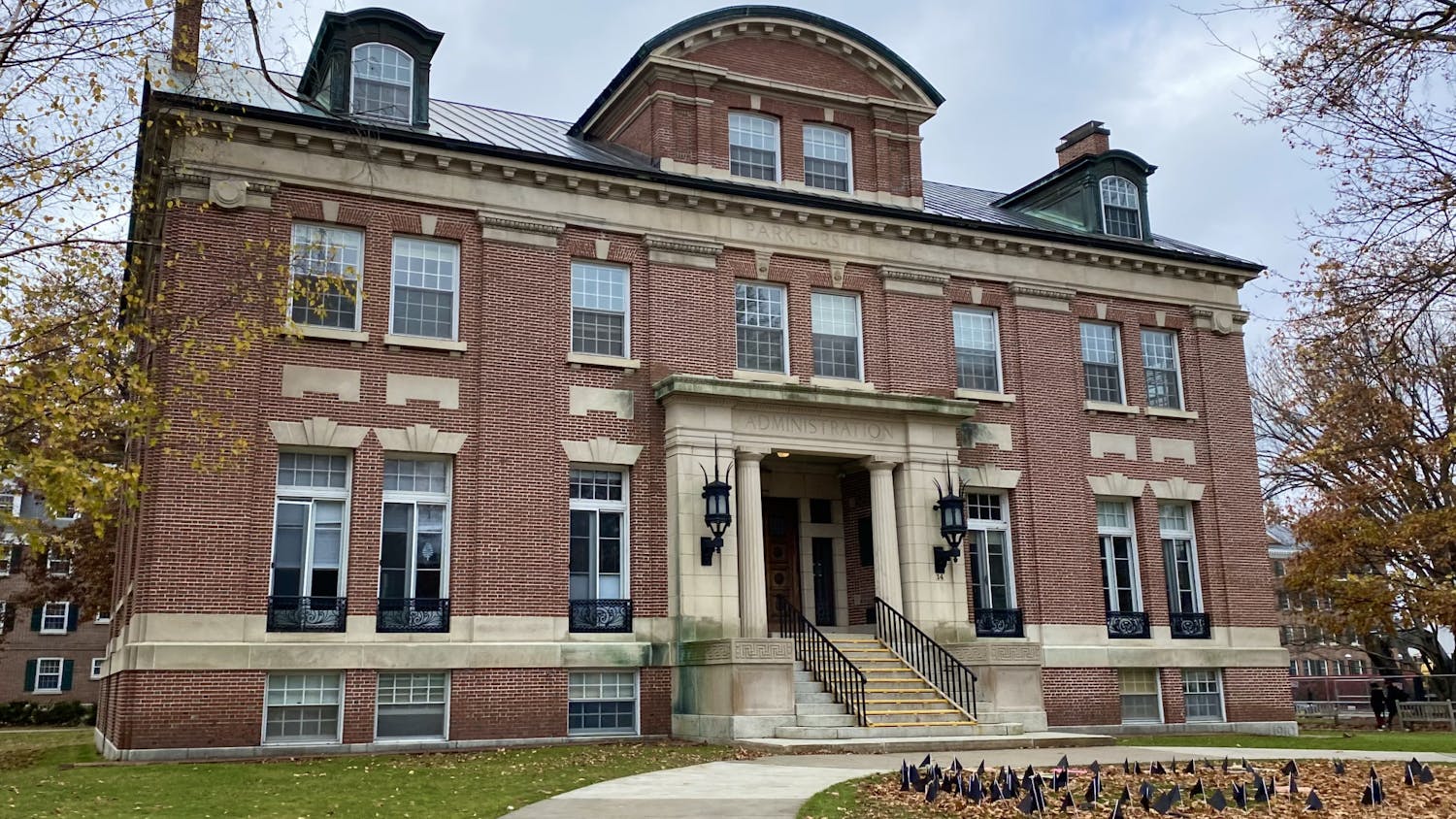In December 2022, the Hopkins Center for the Arts embarked on a major renovation project scheduled to be completed in the fall of 2025. Although the renovations will create nicer rehearsal spaces for arts groups, student-led performance groups are currently dealing with the negative repercussions of the construction and must seek alternative spaces for rehearsals and performances.
Prior to the Hop’s renovation, dance groups had utilized rehearsal rooms in the basement of the center, as well as rooms with “mirrors and a dance floor,” according to director of logistics for Sheba dance troupe Lily Scott ’24. However, the ongoing construction at the Hop has forced Sheba and other groups to relocate their practices to other spaces, like Alumni Gym and Straus dance studio. Although groups have successfully acquired these new practice spaces, they can be restrictive.
“Straus is like a dance floor,” Scott remarked. “Sheba doesn’t like practicing in Straus because we can’t wear shoes, which makes it feel strange to do hip hop.”
Although Straus’ dance floor is great for Sugarplum practice — a contemporary and jazz dance group — as a practice room, former Sugarplum co-director Bryanna Entwistle ’23 explained that Straus is still not an adequate performance space. According to Entwistle, the Hop suggested Sugarplum use Straus for their showcase, but the space was not large enough to hold their usual audience.
In contrast to the dance troupes, Displaced Theatre Company — a student-led theater group — has found some liberty and benefit in the experimentation with production setting, according to Displaced member Lucas Filippone ’26. Filippone emphasized the importance of setting and production in capturing the atmosphere and environment of the show.
“Experiential theater always plays a significant role in our approach,” he said. “We strive to create an immersive experience for our audience, where they feel like when they enter our space, they’re entering into the production, and not just a theater where the production is happening.”
Filippone said that some of the spaces that Displaced has performed in, from Sarner Underground to Sawtooth, have ended up adding something beneficial to their shows.
Finding alternative dance spaces has posed a more significant challenge to Sugarplum and Sheba. Not only are the available dance spaces less-than-ideal, students are sometimes not even able to access them for practices due to limited availability.
“Most arts and performance groups typically practice on Tuesdays and Thursdays,” Scott explained. “There is a significant demand for space all at once.”
In addition to a lack of space, there has been little assistance from the College in helping find alternate spaces for student groups, according to Entwistle. She remarked that the Hop did not provide sufficient help in finding alternative spaces after the construction began. Like Sugarplum, Sheba had to handle the task of finding performance and rehearsal spaces on their own, with little assistance from the College.
“I actually had to contact the Dean since I wasn’t receiving any confirmation regarding our ability to reserve spaces in the gym,” Scott explained.
The school’s lack of communication and funding has been disappointing to Scott.
“We have not received any information about the closure or its consequences, except that the reservation rooms are no longer accessible,” Scott stated. “There was a lack of effort to ensure our well-being or maintain open lines of communication. Performance groups or student groups are different from clubs, as they hold a unique distinction.”
One of the questions that arose when searching for performance spaces is how to accommodate Displaced’s technical needs, such as lighting and sound.
“The majority of the shows we produce are more on the low-tech side, or we find solutions as we go along,” Filippone said.
However, he highlighted that some of the alternative performance venues the company used had technical limitations which still posed difficulties.
“It can be quite challenging to find a suitable space with proper lighting and good sound, as these elements play a crucial role in enhancing the overall quality of most productions,” Filippone said.
Displaced encountered similar problems while performing in the Cube, which did not have the desired lighting and sound equipment.
“The sound system was my JBL speaker,” Filippone said. “And the light system was just like flipping the light switches on and off, which was a bit strange.”
Although groups like Sheba were provided with the proper technical utilities, such as funding “for various enhancements such as lighting, a stage and speakers,” according to Scott, the Hop construction posed challenges in securing funding for other essential resources, like costuming.
“They refuse to provide funding for $100 worth of T-shirts,” Scott said. In past years, the Hop would provide Sheba with costumes for performances held at the Hop, which they would then use for external performances. But with the Hop under construction and unable to host shows, they no longer provide Sheba with any funded costumes.
Entwistle emphasized the challenges and negotiations, such as funding transportation and the off-campus stage, with the College to secure funding for a location.
“For an off-campus venue, the costs for a performance were approximately $5000, which is a substantial amount, especially for a student group that heavily depends on funding. Our proposal was rejected by COSO,” Entwistle said.
However, the Hop stage has always been utilized for dance performances, such as Sugarplum's seasonal showcase. According to her, the group plans to utilize the performance spaces at Collis Common Ground in the upcoming term.
Entwistle highlighted the importance of Sugarplum’s annual end-of-the-year stage showcase and its significance for seniors. However, the group was thorough in their search for a new stage. Entwistle mentions that they began searching for alternative spaces early in the ’23s winter term, well before Sugarplum’s final performance at the end of spring because she knew finding a theater and funding were not going to be easy tasks.
“We eagerly anticipate our stage showcases, so the absence of a stage showcase for the seniors, which is usually a significant event, was incredibly disappointing,” Entwistle said. “We were determined to find an alternative approach to accomplish that.”
The dedication and collaborative effort found in student-led performance groups, like Sugarplum, was the main driver behind the senior showcase last spring.
“I was co-director alongside Pam Pitakonanda ’23 and Emily Gao ’24. Our effort to find a showcase space was a collaborative endeavor, with all three of us hitting the ground running,” Entwistle stated.
Despite these challenges, Filippone emphasized how it’s all part of the process and highlighted the creative capacity and collaboration within Displaced.
“There is a range of spaces, some more ideal than others, but the team always manages to make it work and give their best,” he said. “ I feel like Displaced is pretty unique in our approach to the production side of theater. We were founded on the concept of doing things ourselves and kind of just figuring it out.”
Although Displaced has had success in finding experimental performance spaces, dance groups’ negative experiences highlight that the Hop has provided minimal resources and support, further hindering already underfunded and underappreciated student arts on campus.
“I feel like there’s a long tradition of not really supporting student based dance groups on campus,” Entwistle said. “There is so much talent on campus … I think the students are doing a really good job carrying that, but it’s unfortunate that there’s not really a strong school-based support system.”




